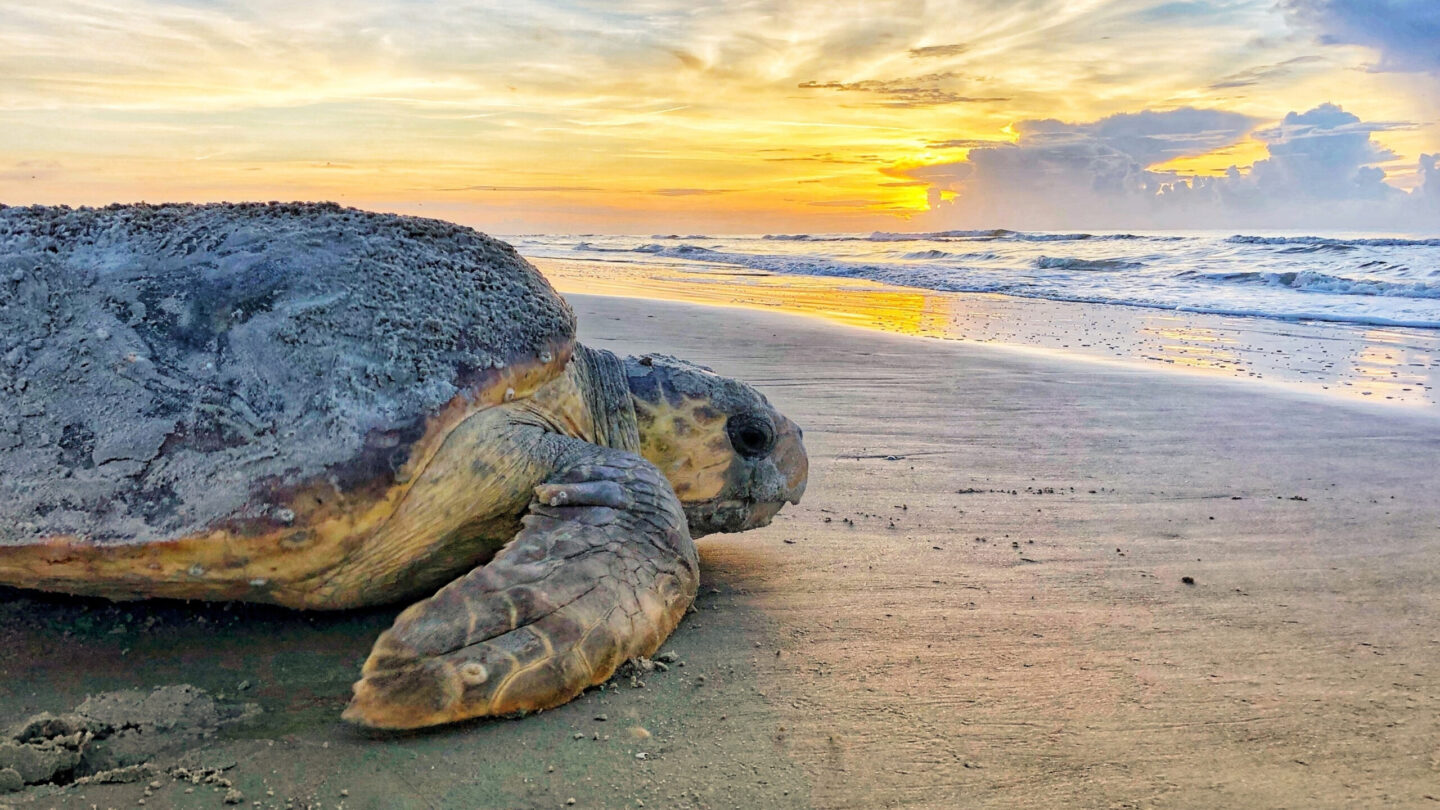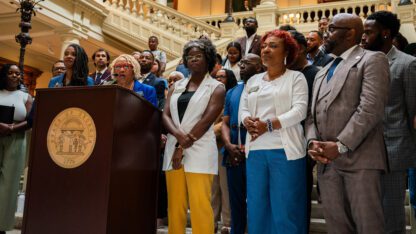Georgia Says Dredging On Coast Could Hurt Sea Turtles

A loggerhead sea turtle returns to the ocean after nesting on Ossabaw Island, Ga.
Georgia Department of Natural Resources via AP
Georgia wildlife officials and advocates are at odds with the federal government over a plan that locals say could kill sea turtles that nest on Georgia’s coast.
The U.S. Army Corps of Engineers plans to begin dredging off the coast in May or possibly sooner. It’s a change from the dredging schedule the agency has stuck with for the past few decades, a schedule that worked around sea turtle nesting season in the Southeast.
The Corps says the different timing, approved towards the end of the Trump Administration, allows for better conservation work.
Critics say it’s an unnecessary change that threatens to kill loggerhead turtles as they come to Georgia’s coast to lay eggs.
Putting Turtles ‘Through A Wood Chipper’
The Corps regularly dredges shipping channels to keep them deep enough for ships to get to and from the ports here. It’s necessary for shipping, but the equipment can injure and kill wildlife.
These dredges work like giant underwater vacuum cleaners, according to Mark Dodd, a wildlife biologist at the Georgia Department of Natural Resources.
“The pumps just suck the material off the bottom — sand and mud,” he said.
But they can also pick up marine animals, including sea turtles resting on the ocean floor.
“They get chopped up and don’t survive,” Dodd said.
Put more bluntly: “We’re sending these turtles through a wood chipper,” said environmental activist Catherine Ridley with the Georgia group One Hundred Miles.
“The goal is to try to figure out how to do everything better for all the species. We’re really not trying to do some evil thing here.”
While loggerheads, which are protected under the Endangered Species Act, and other sea turtles might be found near the coast year-round, they are here in higher numbers in the warmer months, Dodd said.
The summer is also when the adult females come ashore to lay their eggs on Georgia beaches.
“Those are the turtles that we just can’t afford to lose when we think about conservation,” Ridley said. “Certainly, we don’t want to lose any turtle any time of year, but killing nesting females is especially devastating to conservation efforts.”
Not Trying To Do ‘Some Evil Thing’
Officials with the Corps said they’re changing the dredging schedule for conservation purposes.
“None of us want to see turtles harmed,” Nicole Bonine, environmental compliance, sustainability and energy program manager with the Corps’ South Atlantic Division, said.
On a virtual media conference with reporters, she said the change was made to also take into account other protected species, such as North Atlantic right whales and Atlantic sturgeon. And she said the Corps is considering cumulative environmental effects for a large area, from North Carolina to Puerto Rico.
“The goal is to try to figure out how to do everything better for all the species,” she said. “We’re really not trying to do some evil thing here.”

Critically endangered North Atlantic right whales, for instance, come to the Georgia coast in the winter, which is when the dredging has been happening. Bonine said the risk to whales isn’t just from the dredging itself but also boats going back and forth.
Georgia officials say there haven’t been any verified interactions between North Atlantic right whales and dredging equipment.
“The Corps is essentially trying to play the whale card, but it’s a red herring,” said Ridley, with One Hundred Miles. “It’s a problem that doesn’t exist.”
The state of Georgia has documented problems for sea turtles with warmer-weather dredging, though. In September of 2009, the Corps dredged near Brunswick and Savannah. The project stopped after killing six sea turtles in two weeks, according to Dodd.
Federal Versus State
Georgia is pushing back on the federal dredging plan.
In a November letter to the Corps obtained by One Hundred Miles and shared with WABE, Doug Haymans, director of Georgia’s Coastal Resources Division, wrote that the 2009 experience showed that summer dredging would kill more turtles.
“Certainly, we don’t want to lose any turtle any time of year, but killing nesting females is especially devastating to conservation efforts.”
The document opening up the dredging window “disregards long-standing measures aimed at reducing reasonably foreseeable impacts to Georgia’s coastal resources,” he wrote.
In February, the Corps replied with a letter that One Hundred Miles shared with WABE. In it, the agency said that Georgia doesn’t have the authority to block the decision about the dredging schedule approved by the National Oceanic and Atmospheric Administration or to intervene on the plan to dredge.
“The USACE and NOAA specifically choose to manage dredging activities regionally to avoid this potential patchwork of state regulations affecting the multiple different endangered species occurring in the same region that can have conflicting requirements,” Kimberly Garvey, chief of the planning branch, wrote.
The state of Georgia hasn’t yet issued its final comments on the plan.








